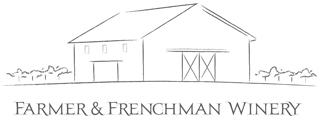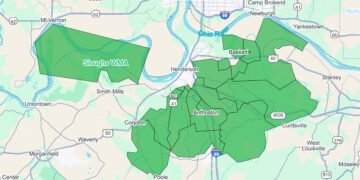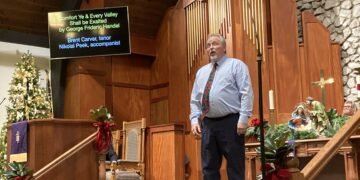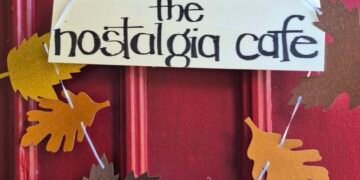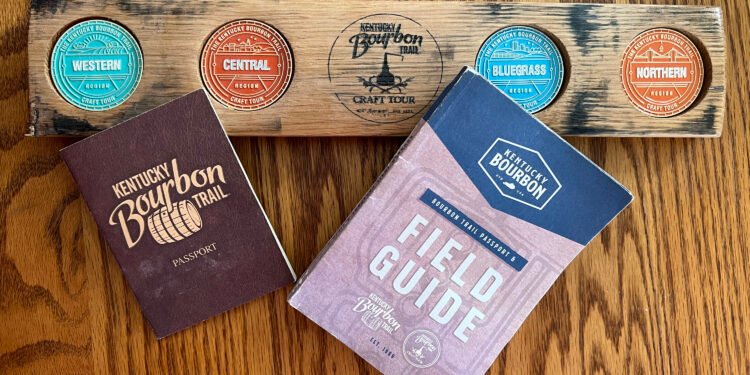(This article first appeared in the July print edition of the Hendersonian)
I liked bourbon when bourbon wasn’t cool.
And I liked visiting bourbon distilleries when that was almost unheard of.
A lot has changed since my wife, Donna, and I more than 30 years ago first visited the Maker’s Mark Distillery in tiny Loretto, Kentucky, tucked among the hills of rural Marion County and accessible by cow-path highways. There was no deluxe visitors’ center back then; our tour began at an old farm house that served as the distillery’s offices. I don’t think they even charged admission.
They just seemed glad to have visitors, to tell the story of how Bill Samuels Sr. in the 1950s bought and revived a dormant distillery and, in what was rare at the time, replaced rye grain with wheat in his bourbon recipe (or “mash bill”) to produce a milder, sweeter whiskey.
Or how his wife, Margie, conceived the distinctive squarish bottle (sealed in flowing red wax), designed the label and coined the Maker’s Mark name.
Or how son Bill Jr. positioned the brand as a premium product in the 1960s and ’70s with cheeky magazine ads that declared, “It tastes expensive … and is.” (A bottle probably cost $20 at the time.)
Those were hard times for bourbon. Starting in the 1960s, bourbon fell out of favor with young consumers. Bourbon distillers, laden with an oversupply of whiskey, kept prices low. In the late 1980s and early 1990s, I was buying splendid Walker’s Deluxe bourbon for about $8.50 a fifth. Distilleries were closing; brands were abandoned. It was a dark time for America’s signature spirit and a Kentucky icon.
By the 1990s, bourbon was struggling to its feet. In 1999, the Kentucky Distillers’ Association tried to jump-start interest in bourbon by creating a tourism experience called the Kentucky Bourbon Trail. A tourist could pick up a pocket-sized cardboard booklet “passport” and get it stamped at each of the seven distilleries on the trail. Once you had visited every distillery, you could turn it in and get a free KBT T-shirt.
It was about that time, in 2000, that we visited our second distillery, an historic country distillery near Versailles known at the time as Labrot & Graham but today is famous as Woodford Reserve.
Then we toured our first distillery that had a real visitors center: Heaven Hill at Bardstown.
We learned about the disastrous fire in November 1996 that destroyed family-owned Heaven Hill’s distilling building and several seven-story-tall whiskey warehouses (or “rickhouses”) in a hellish inferno. In one day, the Shapira family had lost its stillhouse and 15% of its stored bourbon, a $30 million loss in all.
The next morning, the phone started ringing. Other distilleries — competitors of Heaven Hill — were calling to ask, “How can we help?”
The Kentucky bourbon industry, I realized, was something special. I was hooked. I wanted to visit all the distilleries.
That used to be easy. As recently as 2014, we completed the trail in just three days around Memorial Day.
We didn’t stop there. We visited and revisited distilleries, then went to new ones. We guided friends who wanted to complete the trail. Often, we didn’t even bother with reservations.
But already the trail was changing. Back in 2008, the Kentucky Distillers’ Association hired a Henderson native named Eric Gregory to be its president. He brought 20 years of experience in journalism, public relations and governmental affairs.
Gregory lit the fuse on the KBT. The number of visitors to distilleries doubled, then doubled again. In 2010, Bill Samuels, Jr., ran into Gregory at an equestrian event and told him he needed to slow down the trail promotion. Distilleries weren’t ready for the onslaught. They didn’t have sufficient visitor facilities; they didn’t have enough parking spaces or restrooms. They needed to get better prepared.
“I still have the scratches on my head where he hit me with that World Equestrian Games program,” Gregory said.
But better prepared they became, and the trail exploded as bourbon boomed. In 2007, when the passport program began, just 189 people completed the trail. But during just the first nine months of 2012, a record 13,173 people toured all the distilleries. That was a 6,869% increase from five years earlier.
Meanwhile, the KDA pushed legislation that made it easier for smaller craft distilleries to open. A Kentucky Bourbon Trail Craft Tour launched in 2012. Now there were two passports to fill up.
Some of those craft distilleries had strong Henderson connections. Kentucky Peerless Distilling Co. was opened in Louisville in 2015 by Corky Taylor—the great-grandson of the man who owned the original Kentucky Peerless distillery in Henderson—and his son, Carson. It has won award after award.
Meanwhile, Henderson native Walter Zausch a few years ago bought a tiny distillery on a farm outside Frankfort and renamed it Whiskey Thief. There, visitors sample full-strength bourbon and rye that is pulled directly from barrels using a copper tube called, well, a whiskey thief. No one else in Kentucky does its samplings like that.
And that’s the thing: Every distillery in Kentucky is one-of-a-kind. Casey Jones in Hopkinsville is owned by the grandson of a Prohibition-era moonshiner and bootleg whiskey still builder. The Bard Distillery is located in the gymnasium of the former Graham High School. Castle & Key near Frankfort operates at the former Old Taylor Distillery, which had been abandoned years before. We first laid eyes on it when it was still padlocked and rusting away.
And remember Maker’s Mark? Today there is a dedicated welcome center, a large Chihuly glass art installation and a sprawling gift shop where visitors have the option to dip their own bottles into the famous red wax.
In May 2021, the distillers’ association replaced its passports with a guide book that included 37 distilleries — 18 big distilleries on the main trail and 19 craft distilleries. We accepted the challenge and in September of that year, we set out for the handful of distilleries that we hadn’t visited yet. I think we were among the first people to fill up the field guide.
But while bourbon is timeless, other things change. On June 20, to mark the 25th anniversary of the Kentucky Bourbon Trail, the distillers’ association announced that it will merge the main and craft trails into a single entity called, simply, the Bourbon Trail.
That’s in large part because there are now so many distilleries on the trails — 46 and counting — you can no longer complete the bourbon trail experience in a single weekend.
So, the KDA will phase out incentives for folks to rush across the trail, and instead encourage them to take it slow. Take a cocktail class. Have lunch at one of the growing number of distillery restaurants. Have a barrel-tasting experience. Savor a cocktail. Enjoy some live music.
“They want an experience, a memory,” Gregory said of visitors.
Before long, it will roll out a new online tool, to be called Build Your Own Bourbon Trail, to help visitors plot their visits to distilleries as well as hotels and restaurants.
Meanwhile, the KDA reports that since the Kentucky Bourbon Trail launched 25 years ago, it has drawn 18 million visitors from all 50 states and dozens of countries.
So, yeah, you’d better make reservations well in advance.
“We knew we had something special,” Gregory said, “but we never could have dreamed it would evolve from a simple industrial tour of distilleries into an international bucket list experience filled with rare and behind-the-scenes adventures.”




